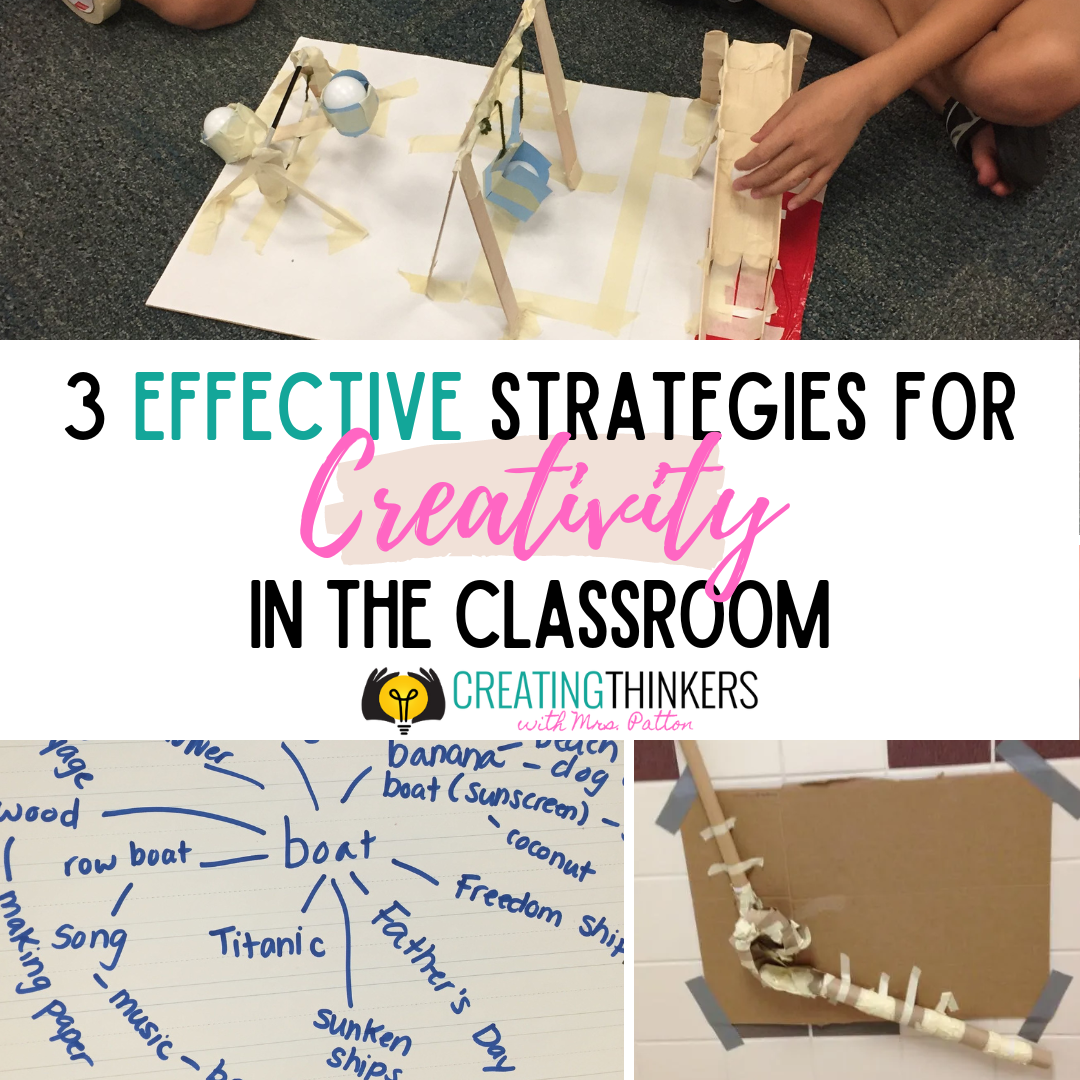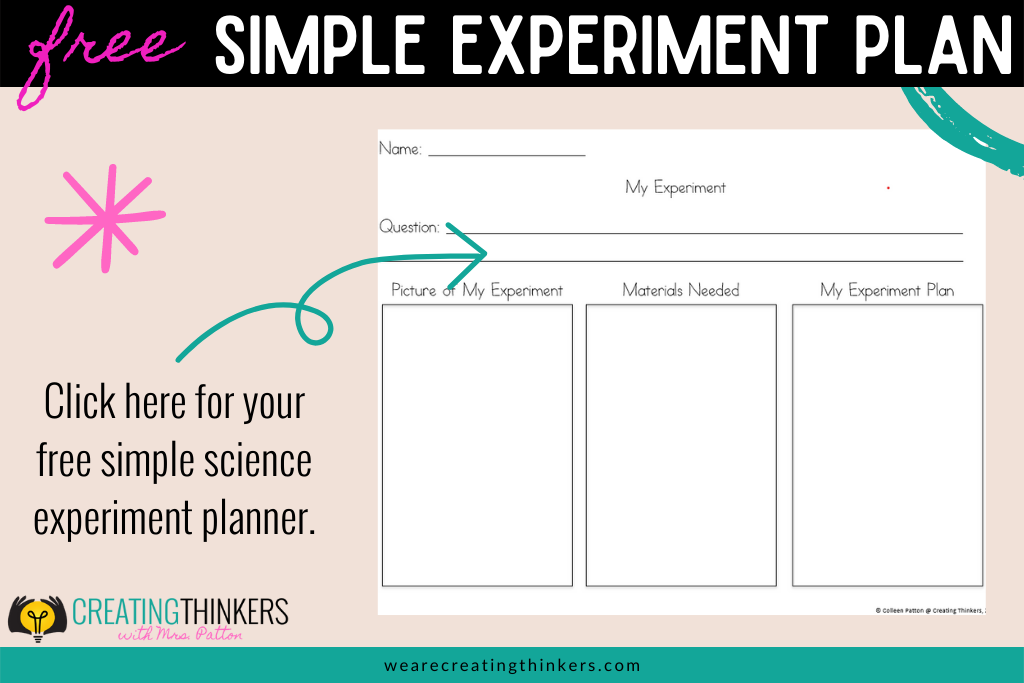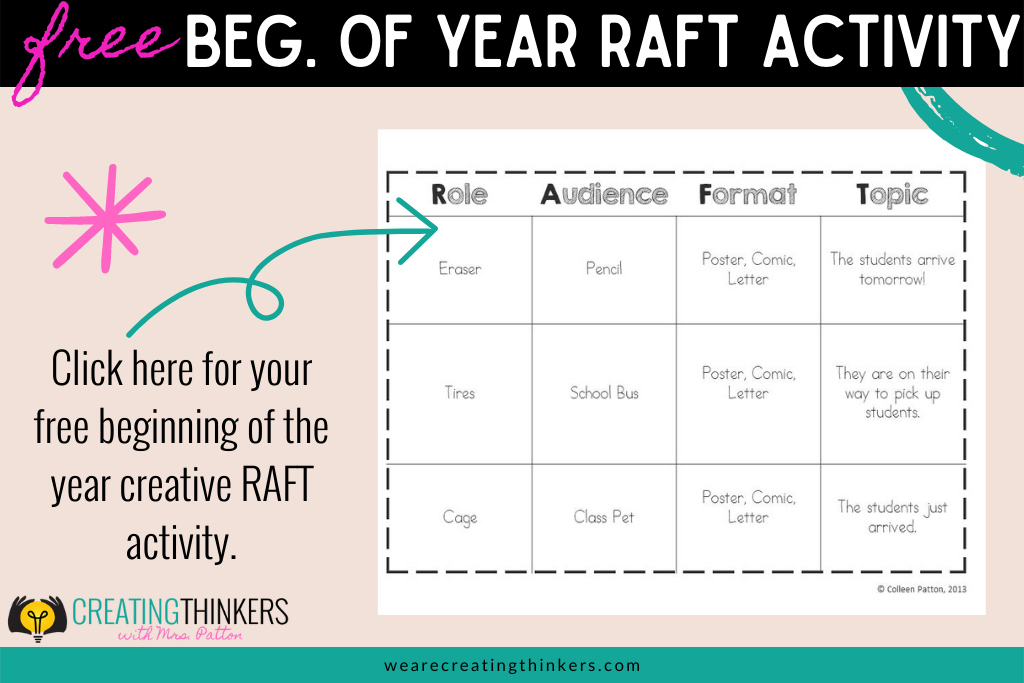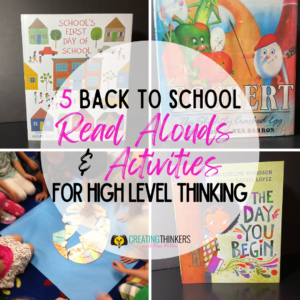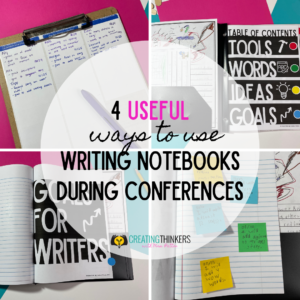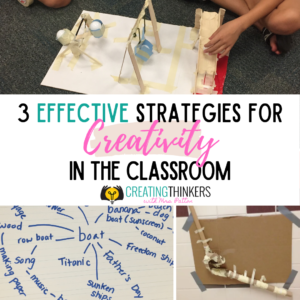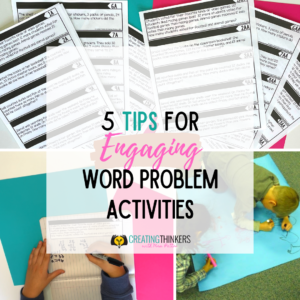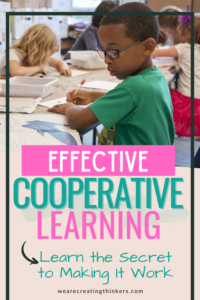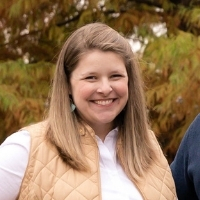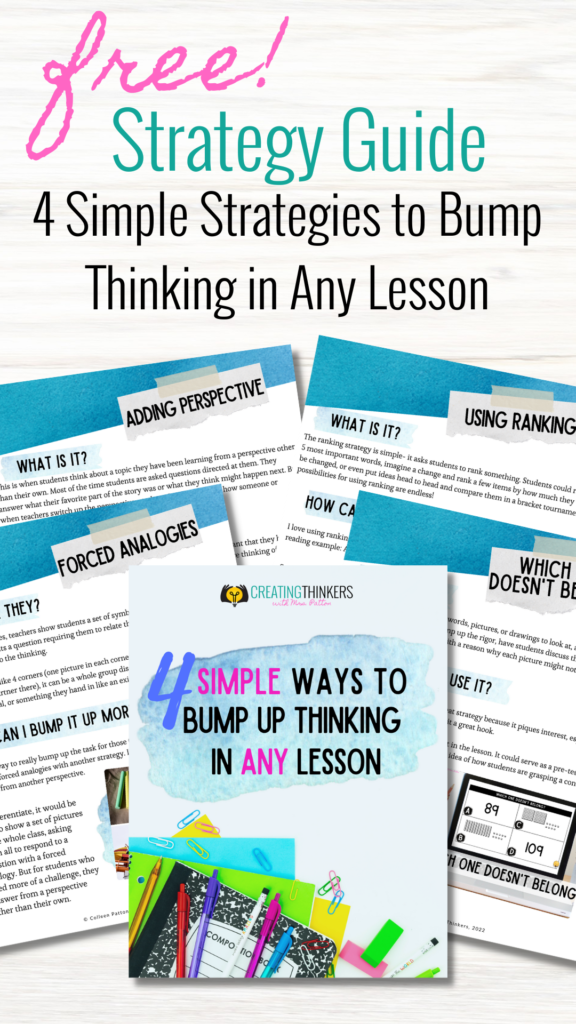In order to best prepare students for their futures, we need to infuse creativity in teaching.
We often use the word “create” in objectives for students, but does this always mean students are truly being creative? Think through the following examples and see what you think.
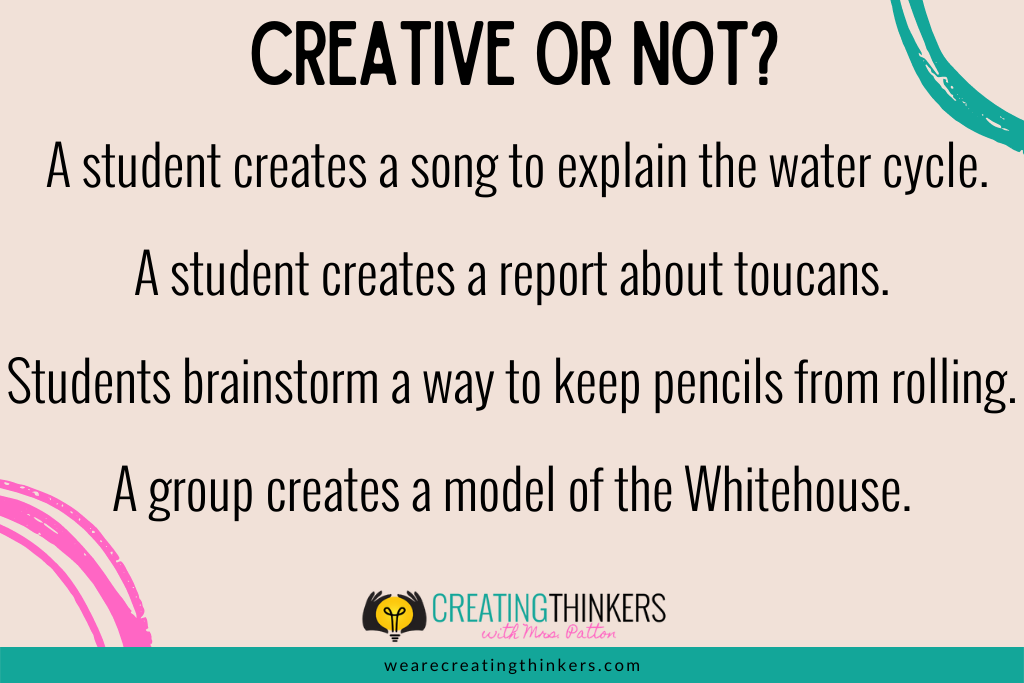
In order to foster true creativity in the classroom where students are able to think about things they are learning in new and different ways, we first need to create an environment where we expect and celebrate creativity.
The Classroom Creative Environment
Obstacles to creativity in the classroom often begin with the environment. The creative classroom environment is one that encourages flexible thinking, encourages students to seek out and solve problems, and provides a safe feeling where students will take risks.
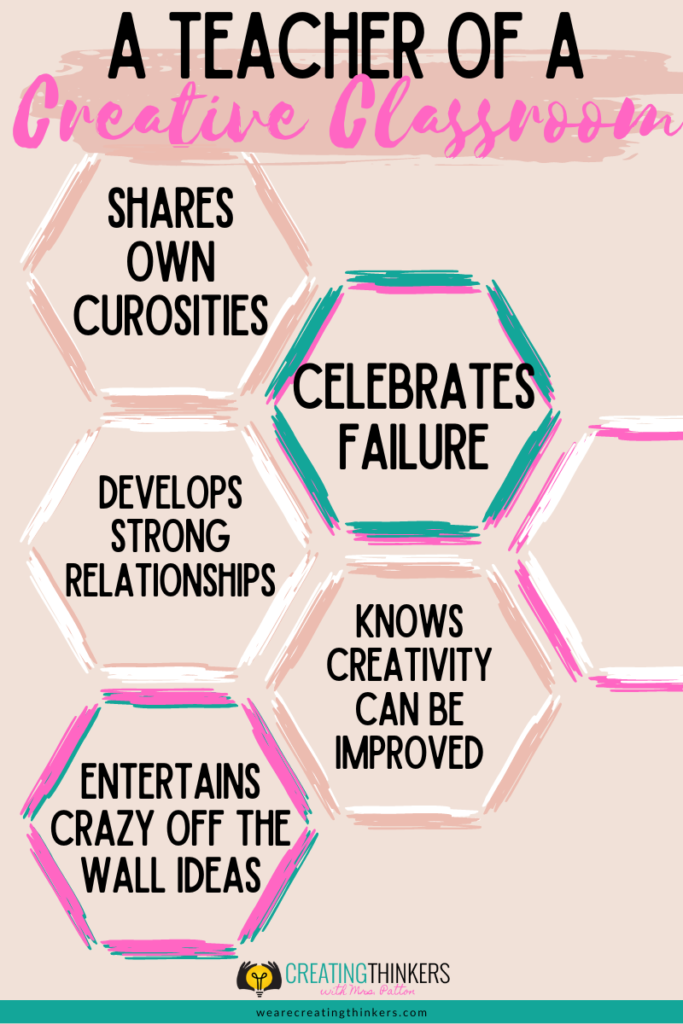
Be the teacher who shares your own curiosities that relate to their learning. When you share an experience… like watching a video showing the production of an item in a factory… share the ideas that came to your mind. Tell your students what it made you wonder and how you think the process could be applied to something else. If we expect students to be questioners and wonderers (often a beginning to being creative) we have to model it ourselves!
Be the teacher who develops strong relationships with your students because you genuinely care! These relationships lay the foundation for students’ attitudes about school and willingness to potentially try and fail.
Be the teacher who entertains the crazy off-the-wall ideas rather than shooting them down immediately. These are often creative ideas! You can honor them by giving them a moment of your time or even writing them down on a post-it and sticking it to a creative ideas board without letting it take over your lesson if it isn’t appropriate.
Be the teacher who designs lessons that require students to think differently. Rather than just asking students to get information, expect them to DO something with it! After all, an enticing end task can be quite the motivator for students to own their learning.
Be the teacher who celebrates failure. When you have someone who takes a risk… say a group tried a hard challenge such as using cardboard tubes to fashion a loop-de-loop on a marble roller coaster… celebrate their attempts, their grit, and their problem-solving skills. Share your own successes and failures in designing engaging learning experiences for your students… because we all know they don’t always go as we plan!
Be the teacher who knows creativity can be practiced and improved. By the time we are adults, many of us have already labeled ourselves as creative or not, with no room to grow. However, research has taught us that creativity can be learned! With practice and reflection, we can all learn strategies to being more creative versions of ourselves.
If you’re wondering how to create creativity in the classroom, know that it all starts with YOU! Do the things above and you will lay the foundation for student creativity to flow.
Creativity in Classroom Teaching
Once you create an environment ready to celebrate and encourage creativity, you need to plan lessons that allow for creativity. You can infuse creativity into any lesson, but it does require time. As the expert you are in your curriculum, pick a lesson to try this with. It could be a lesson that is typically unengaging for your students, a lesson on a very important concept for your students, or one that you think needs a facelift for one reason or another.
Keep this lesson in mind as you read through these strategies that encourage creativity in students.
Random Word
If you have a lesson that could allow for a task where students come up with a solution to a problem or a new idea, this is a fantastic strategy.
Generate a random noun (you can easily use this random word generator if it’s helpful). Students write down the noun on a piece of paper and use it to come up with related words. Or if you’re doing the mind map portion as a class, write it on the board/ piece of chart paper.
They then use these random words to help them come up with an idea for the problem you’ve presented them. Side note- the original word and the related words do not need to connect to your problem. In fact, being unrelated gives a unique perspective or starting point most people wouldn’t take.
As an example, here is one I did with my students from the word “boat.”
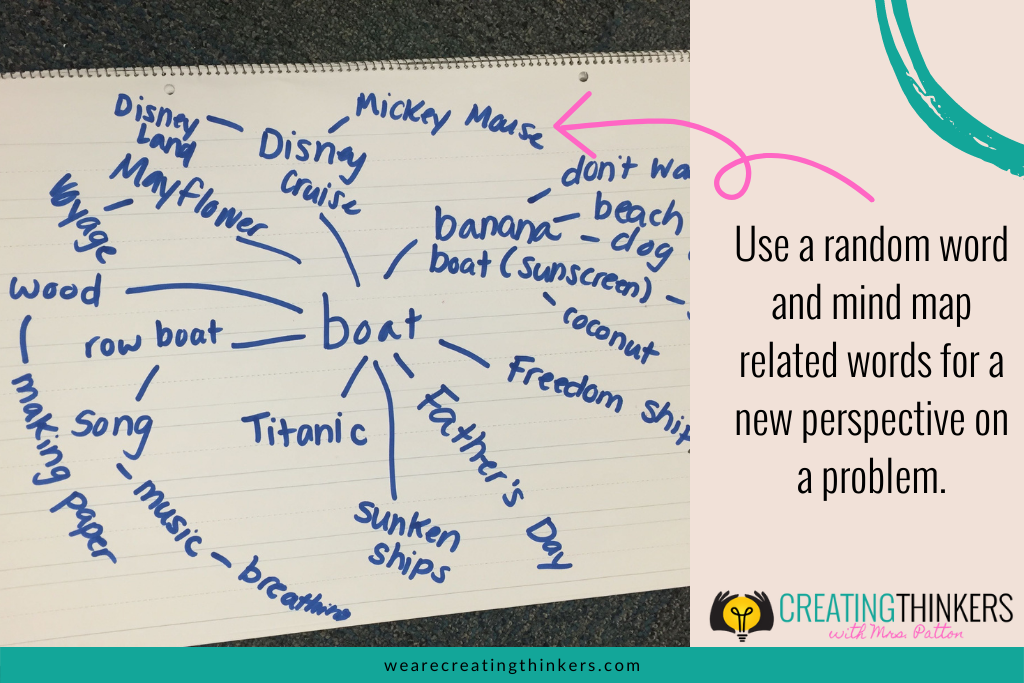
My students used the words we brainstormed from the original word “boat” to help them come up with an idea for a plant experiment. Some words were more helpful than others, but students certainly came up with some interesting ideas that we were able to test out.
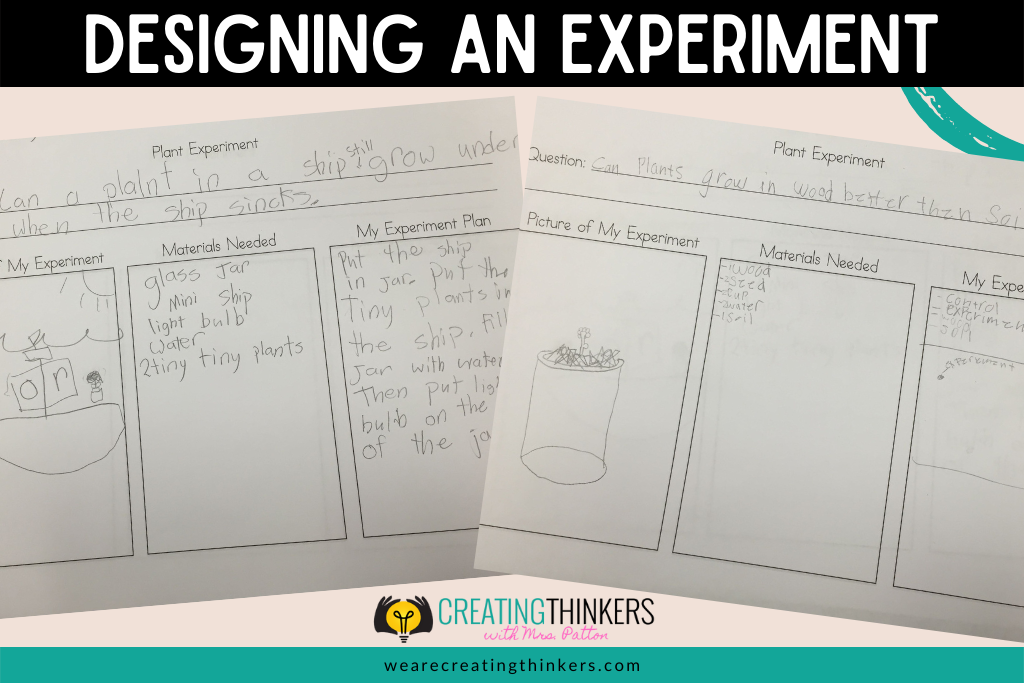
If you’d like to give your students the opportunity to design a simple experiment of their own, feel free to grab this experiment freebie:
To practice this strategy (and build in that practice to teach creativity) you could do this as a 10-minute warm-up or filler activity. If you’re interested in this, give them a problem such as “What can we do to keep a pencil from rolling off the desk?” Then, pick a random word, mind map all the related words, and see what ideas come to your group of creative thinkers!
Creative Task
You may find yourself with an objective students need to learn that lends itself to some sort of creative task.
These creative tasks involve a scenario you give students along with specific constraints possibly about time, materials used, size of what they are creating, and more.
If the task is focused on engineering something, it will feel a lot like a STEM challenge. These certainly are creative tasks, but let yourself imagine tasks that don’t involve engineering as well. As long as you are providing students with a content-driven task promoting high-level thinking and significant learning opportunities, you’re on the right track!
Before going into my classroom example, I want to share something that was an a-ha for me: There is creativity in the constraints! Let me explain…
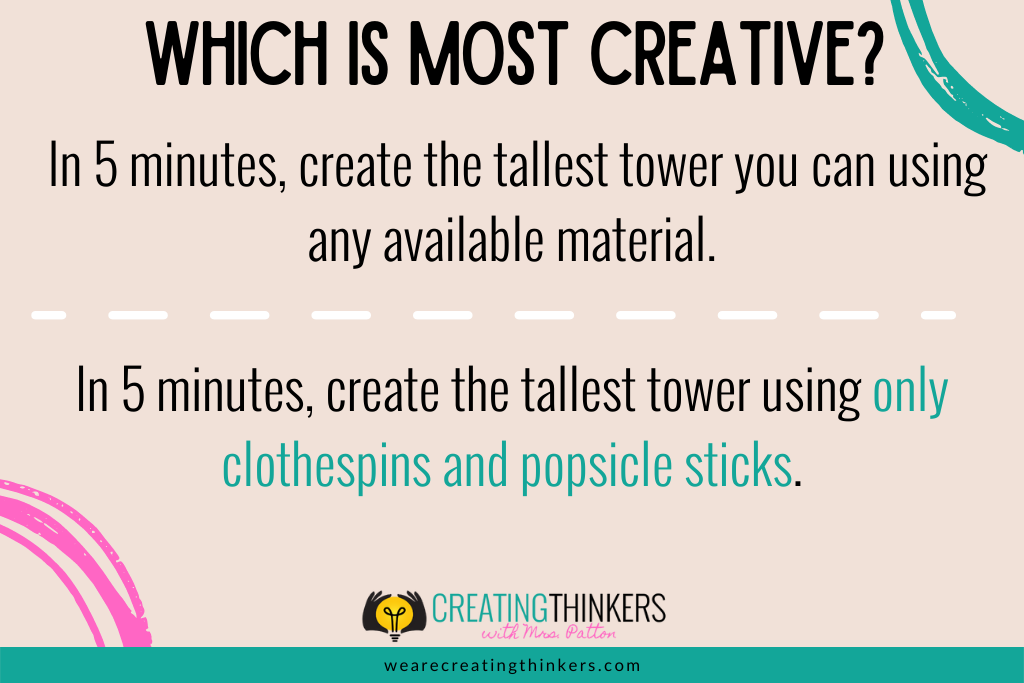
See? When you give students constraints such as specific materials or a certain length of tape to use, they have to find ways to creatively use these materials. Use those purposeful constraints to stretch your creative thinkers!
One example of a creative task I used in my classroom was for our 2nd grade motion standards. Students needed to create a playground for a ping-pong ball to display 3 different types of motion.
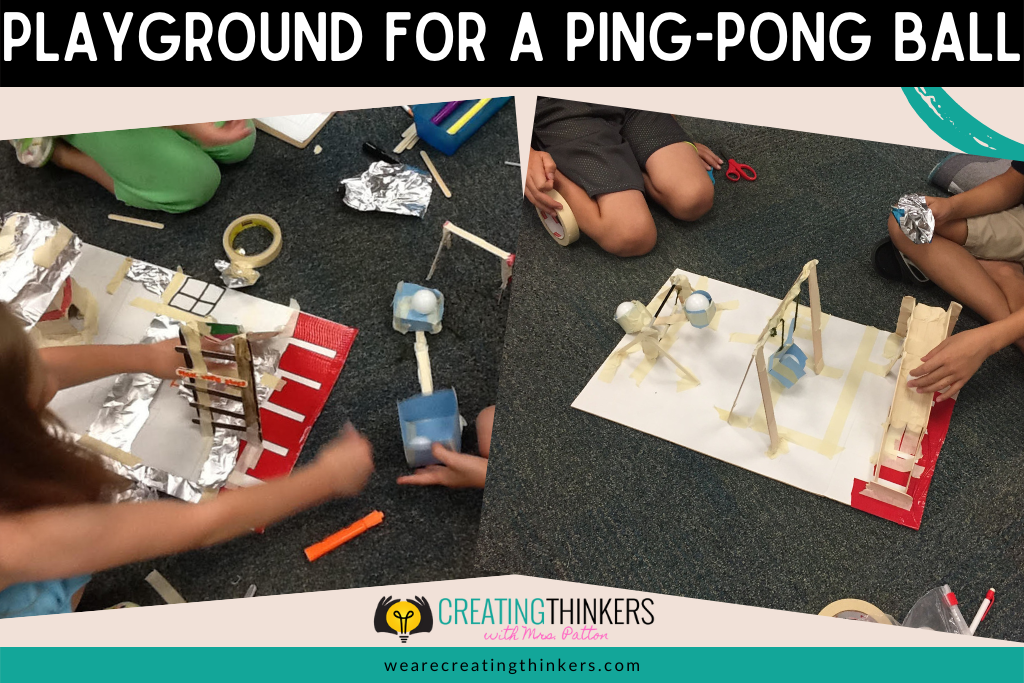
As students were working together in groups, we certainly utilized the cooperative learning group roles, which was so helpful in getting these creative minds to cooperate! But the students were able to apply what they learned about motion in a meaningful, engaging way.
Let your own creativity fly when designing a creative task for your students!
RAFT
The RAFT is by far one of my favorite activities for creativity in the classroom. It is all about students taking content they have learned and thinking about it from different perspectives.
To help explain, here is a freebie you could easily use at the beginning of the year:
You pick the content area, then give students a few options for each of the letters in the acronym RAFT.
R- Role
A- Audience
F-Format
T-Topic
Generally, I create a table like the freebie for you above, and have students pick one row. I let them change out the role, audience, or topic if I approve it. I always like to give students more ownership in their learning whenever I can.
This creativity strategy is a favorite of mine because it is incredibly versatile! It can even provide creativity in teaching mathematics, something many people see as a subject area without room for creativity. Here’s a student example about telling time:
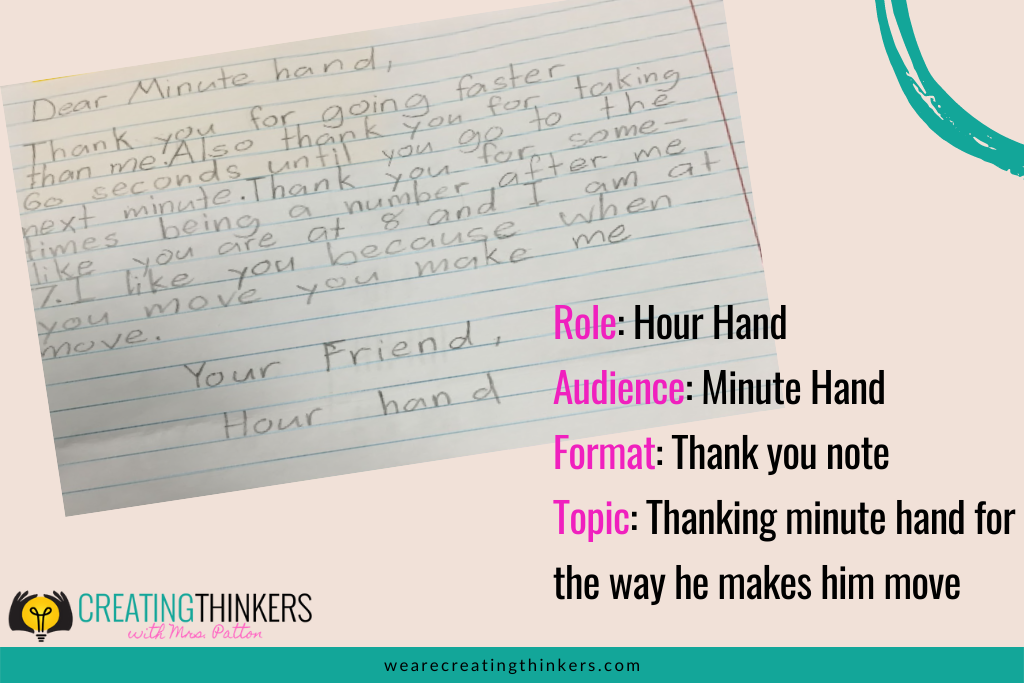
I will add that it helps to have students plan their responses, at least making a list of the content they will include before making their final products. It helps them make sure they don’t miss anything when they get wrapped up in making the product.
I sure hope you and your students enjoy this one!
Designing Lessons with Creativity
I hope these strategies help answer the question, “How can creativity be used in the classroom?”
It’s more than an objective with the word “create” in it. It’s about giving students the space and opportunity to come up with unique ideas (at least to them) in relation to what they are learning.
Encourage students to think in creative ways, model it yourself, and give them plenty of practice. If students aren’t used to teachers asking them to think in creative ways, it can take some time for them to get comfortable.
If you want to try these kinds of creative activities from the beginning of the year, you might enjoy these activities.
I also have a RAFT and other perspective activities in my “Not Your Normal Back to School Unit.”

Let Me Help You Turn Your Students into Thinkers!
If you have a passion for getting your kids to think, you’ll love my FREE Guide. It’s about 4 simple strategies to bump up the thinking in any lesson. Download it for free and stay in touch to get classroom-tested ideas straight to your inbox!
Keep those kids thinking!
Colleen Patton

